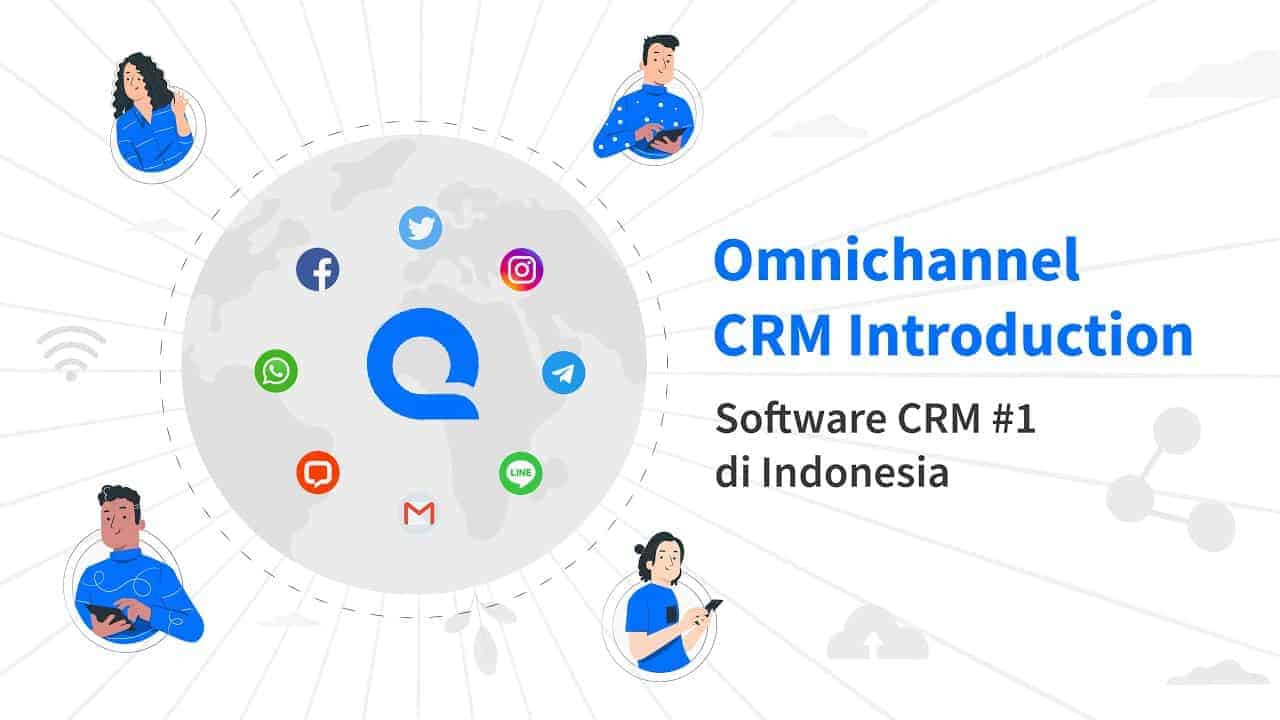
If you’re just starting to learn about CRM software, you might feel confused by all the fancy words and short forms people use in this field. Don’t worry, though! The CRM glossary is here to give you simple and clear explanations for the most common words and shortcuts in CRM.
Whether you own a business and want to make your customers happier or work in sales and want to work smarter, you should read this guide. Let’s scroll down the CRM software glossary below and find the CRM terminologies you need to know!
Also Read: What is a CRM System and Benefits of CRM You Might Not Know
Others
360-Degree Customer View
This means having a complete picture of a customer, including their age, what they’ve bought before, and how they like to communicate.
A
A/B Testing
This is when we test two versions of a webpage or email to see which one works better in getting people to buy something or engage with us.
Account
An account is a company or organization we do business with.
Activity
An activity is when we interact with someone in business, like making a phone call, sending an email, or meeting.
Administrator
An administrator is a person who has special powers in our business software. They’re responsible for setting up user accounts and ensuring the software works correctly.
Analytics
Analytics is the process of looking at data to figure out things and make decisions.
API
An API allows different software programs to talk to each other.
Appointment Scheduling
This is when we use software to automatically set up appointments and meetings with our customers, like product demonstrations or service calls.
Artificial Intelligence (AI)
The simulation of human intelligence in machines programmed to think and learn like humans.
Auto-Responder
An auto-responder is a pre-written message sent automatically when something specific happens, like when a customer asks a question.
Automation
Automation is when we use software to do tasks we do repeatedly without having to do them ourselves, like sending follow-up emails or setting up appointments.
B
BANT
A way to determine if someone is a good potential customer is by looking at their budget, authority to make decisions, need for your product, and when they might want it.
Business Intelligence (BI)
Collecting and studying data to understand how a business is doing and make smarter decisions.
C
Campaign
A set of marketing or sales activities aimed at a specific group.
Campaign Management
Planning, carrying out, and measuring how well marketing campaigns work.
Cases
Problems or complaints that customers report and need help with.
CHAMP
A method to figure out if someone might be a good customer by looking at their challenges, decision-making power, budget, and what’s most important to them.
Closed Sale
When someone buys something from your company, the transaction is complete.
Cloud-based CRM
CRM software is hosted on remote servers and accessed through the internet rather than installed on a local computer.
Cloud- or Web-Based
Refers to software accessed and stored on the internet rather than on a specific computer or server.
Collaboration
The ability for different people to share and use the same information in the CRM.
Contact
A person or company a business deals with or wants to deal with.
Contact Center
A central place where customer service folks talk to customers via phone, email, or chat.
Configure/Price/Quote (CPQ)
Software that helps sales teams determine the right product price and create customer quotes.
Contact Database
A collection of information about customers and other contacts, like their contact info and what you’ve discussed with them.
Contact Management
Keeping track of all the information about your contacts and customers.
Contact Role
A person’s job or position in a company, like a decision-maker or an influencer.
Contract Management
Creating, managing, and tracking contracts between your company and customers, partners, or vendors.
Converted Lead
When someone who was a potential customer becomes a customer.
Conversion Rate
The percentage of people who become customers from all the people you talked to or tried to sell to.
Also Read: How to Increase Conversion Rate?
CRM Analytical Reporting
Reports that help you understand customer data and figure out how well your sales and other things are doing.
CRM Software
Programs that help businesses handle customer interactions, sales, and support and look at customer data.
CRM Strategy
A plan for how to use CRM to make customers happier and make more money.
CSV file
A CSV file is a file that holds data in a table with rows and columns, and it’s simple to read.
Customization
Changing the CRM to work better for your business, like adding new fields or making special forms or reports.
Custom Fields
Extra fields you can add to the CRM to keep info about customers.
Customer Data
All the information you have about a customer, like their contact details, what they bought, and how they like to be contacted.
Customer Engagement
How much a customer interacts with and cares about your company.
Customer Experience (CX)
A customer’s whole experience with your company, including what they think about your products services, and how you help them.
Customer Experience Management (CXM / CEM)
Make sure customers have a great experience with your company and try to improve it.
Customer Journey
All the times a customer deals with your company over time.
Customer Loyalty
How much a customer likes your company and wants to keep buying from you.
Customer Relationship Management (CRM)
Keeping track of your customer interactions and relationships, like sales, support, and marketing.
Customer Retention
Keeping customers over time and not losing them to other companies.
Customer Satisfaction
How happy a customer is with your company’s products, services, or overall experience.
Customer Satisfaction Score
A number that shows how happy a customer is with your company or brand.
Customer Service Management
Making customer service better and helping customers.
Customer Success Management
Ensure customers are happy and successful with your products or services.
Customer Valuation
Figuring out how valuable a customer is to your business.
D
Data Analysis
Looking at data, cleaning it up, changing it if needed, and using it to find important information and insights.
Data Insights
Understanding and knowledge that you get from analyzing data.
Data Enrichment
Adding more data to your CRM, like information about a person’s age, job, or company size, to make it better for sorting and personalizing.
Data Protection
Making sure data is safe from people who shouldn’t have it, like keeping it from being seen, used, changed, or deleted by the wrong people.
Data Privacy
Keeping personal info, like customer data, safe by following the rules and being ethical when collecting, using, and sharing it.
Dashboard
A visual screen that shows the most important information and numbers from your CRM system.
Dead Lead
A person or company that’s not interested or doesn’t respond anymore because they didn’t answer when you tried to contact them.
Demand Generation
Getting people interested in a product or service by marketing and finding potential customers.
Detail View
Looking at all the information about a customer, like their name, contact info, and history, in one place.
Document
A digital file, like a PDF or Word, can be stored and shared inside the CRM.
Drip Campaign
Send emails to possible customers every so often (like every day or every week) to keep them interested and help them decide to buy.
Duplicate
When you have more than one record for the same customer in your system, like having two entries for the same person.
E
Email Marketing
Sending emails to people, like leads and customers, to share news deals and invite them to events.
Email Response Management
Handling and replying to customer emails, typically using tools or pre-made messages.
Email Reminder
An automatic message that reminds someone about an upcoming event or task.
Email Template
A ready-made email message you can start with and change for different people.
Entity
Different kinds of information are kept in a CRM, like customer details, leads, and customer issues.
Escalations
Making a customer problem or request go to higher-level support or management.
Event
A planned meeting, call, or something happening in the CRM.
Extension
Adding extra features to your CRM, like connecting it to other software or creating special fields.
F
Field
Specific information you can save about a customer, such as their name or email.
First Touch
The first time a customer talks to a company or salesperson.
Follow
Keeping an eye on what a customer does and says in the CRM.
Formula
A way to calculate a value using other things in the CRM.
Formula Field
A field that gets its value from a formula, not from typing it in.
Forecast
Guessing what sales or money will be like in the future.
Funnel Velocity
How fast leads move through the sales process, measured by how many become customers and how quickly.
G
Gamification
Making work fun using points, badges, and scoreboards, often in a CRM.
H
Helpdesk
A service that helps customers by answering questions and solving problems.
Helpdesk System
Software that handles and tracks customer support requests and interactions.
Helpdesk Ticketing System
A specific helpdesk system that uses “tickets” to manage customer support requests.
History
A record of what a customer did and talked about in the CRM.
Home Page
The first page you see when you use a CRM, usually shows what’s happening recently.
HTML
A computer language used to make web pages.
I
Instance
A specific setup or version of a CRM system, like a test or a real-use version.
Integration
Make the CRM work with other software, like email tools, accounting software, or social media platforms, so that they can share data.
Invoice
A document that lists what a customer bought and how much they must pay.
K
Kanban
A way to manage work visually, like using cards or columns to track tasks or projects.
Kanban View
Visually seeing tasks or leads in a CRM, like cards on a board.
Knowledge Management
Keeping and sharing info about customers, products, and services inside the CRM.
L
Landing Page
A webpage to get leads, usually with a form or button to click.
Last Touch
The last time a customer talks to a company or salesperson.
Layout
How the CRM looks and how info is shown.
List View
A way to look at info in the CRM as a list.
Lead
A potential customer or client who has expressed interest in the business’s products or services.
Lead Attribution
Figuring out where a lead came from, like a certain ad or website, to know what works best.
Lead Capture
Getting leads from different places, like website forms or social media, and saving them in the CRM.
Lead Conversion
Changing a lead into a customer, usually through selling or getting them started with a product.
Lead Conversion Process
The steps to turn a lead into a customer.
Lead Conversion Rate
The percentage of leads that become customers.
Lead Deduplication
Taking away extra leads in the CRM so each one is only counted once.
Lead Distribution
Sending leads to the right salespeople based on where they are or what they’re interested in.
Lead Enrichment
Adding more info to a lead’s record, like their age or what they do on social media, to understand them better.
Lead Generation
Finding and getting new leads through different ways, like ads or social media posts.
Lead Magnet
A good piece of content, like a guide or a video, given to someone in exchange for their contact info.
Lead Management
Watching and taking care of leads from when they first show interest to when they buy, including rating them, checking if they’re good, and keeping in touch.
Lead Nurturing
Connecting with leads over time through emails or events.
Lead Qualification
Seeing which leads are most likely to buy based on money, power, need, and timing.
Lead Scoring
Giving a lead a number that shows how likely they are to buy.
Lead Scoring Decay
Lowering a lead’s score if they don’t talk to the company for a while.
Lead Scoring Model
A set of rules to give a lead a score based on who they are and what they do.
Lead Scoring Threshold
The number where leads are called “good enough” and sent to sales.
Lead Scoring Exclusion
Not scoring some leads, like those from specific places or people who don’t want to get marketing emails.
Lead Source
Where a lead comes from, like a friend, a website, or a trade show.
Lead-to-Cash
Turning a lead into a customer and then getting their money for the sale.
M
Machine Learning
A type of computer smarts or AI that helps systems improve by learning from information over time.
Marketing
The process of getting people to know about and buy products or services through ads, deals, and talking to the public.
Marketing Analytics
Using numbers and facts to check how well marketing plans and websites work, like seeing if ads and web pages interest more people.
Marketing Attribution
Figuring out which ads and ways of marketing helped make a sale and which didn’t, to know what works best.
Marketing Automation
Using computer programs to do repetitive marketing jobs, like sending emails, looking after leads, and posting on social media.
Marketing Funnel
A picture that shows how someone goes from hearing about a product to buying it, with different steps along the way.
Marketing Performance Management
Watching and studying how marketing campaigns do, like seeing if they make money, get leads, and turn leads into customers.
Marketing-Qualified Lead (MQL)
A lead that seems likely to buy because they showed interest in marketing.
Mobile CRM
Software that helps with customer stuff, but it works on phones or tablets.
N
Natural Language Processing (NLP)
Teaching computers or AI to understand and talk like people do.
Navigation Bar
A menu on a computer screen that helps people move around in a CRM.
Notification
A message or signal from a CRM, like a reminder or news.
Nurture Campaign
Sending automated emails to leads over time to get closer to making a sale.
O
Object
Something special or necessary in a CRM, like a customer or a lead.
On-Premises
When software is on a specific computer or server, not the internet.
On-Premises CRM
A CRM system on a particular computer or server, not the internet.
Open-Source CRM
A system that anyone can change and share because its code is public.
Opportunity
A chance to make money, like a possible sale.
Opportunity Management
Watching and managing possible sales.
P
Personalization
Making things special for each customer using info from the CRM, like showing them unique stuff and deals.
Pipeline
All the steps a lead or chance goes through before they become a customer.
Pipeline Management
Looking after leads and opportunities as they move through the sales pipeline.
Predictive Analytics
Using info, math, and computer learning to guess what might happen in the future based on what happened before.
Probability
How likely something is to happen.
Prospects
Possible customers who seem like they might buy.
Q
Qualified Lead
Someone who might buy, picked by marketing, and checked by sales to ensure they fit as a good customer.
R
Raw Leads
Leads that still need checking or talking to.
Relationship Intelligence
Understanding and using the connections between customers, leads, and contacts.
Relationship Management
Keeping and looking after customer relationships, leads, and contacts.
Remarket Lead
A lead talked to before but didn’t buy.
Retargeting
Showing ads to people who visited a website or interacted with a brand before to bring them back and get them to buy.
Revenue
All the money a company gets from sales and business stuff.
Revenue Forecast
Guessing how much money a business will make in the future.
S
Sandbox
A safe place to try out and make changes in a CRM without messing up the real system.
Sales
Selling products or services to customers.
Sales-Accepted Lead (SAL)
A lead that the sales team checked and can follow up on.
Sales Coaching
Helping salespeople get better by training and giving advice.
Sales Compensation
Giving rewards and extras to sales reps, like bonuses or stocks, to motivate them.
Sales Enablement
Giving sales reps what they need to sell better, like product information, case studies, and competition info.
Sales Forecasting
Using CRM data to guess how much money the business will make based on past info, leads, and how many become customers.
Sales Force Automation (SFA)
Using software to make sales tasks easier, like managing leads and opportunities.
Sales Funnel
A picture showing a lead’s stages before buying, like learning, getting interested, checking, and buying.
Sales Optimization
Making sales better by looking at data and finding ways to improve.
Sales Performance Management
Tracking and studying how well sales reps do, like how many sales they make and how they work.
Sales Pipeline
A view of how a lead or opportunity moves towards becoming a customer.
Sales-Qualified Lead (SQL)
A lead that has been qualified by the sales team and is ready to be passed on to the account management team.
Sales Quota
A goal for how much a salesperson or team should sell in a specific time.
Sales-Ready Lead (SRL)
A lead is ready for the sales team because they seem likely to buy.
Sales Stage
The steps a lead goes through before becoming a customer.
Sales Team
The group of people who sell a company’s stuff.
Sales Territory Management
Dividing sales areas into smaller parts and giving sales reps their areas.
Sales Velocity
How quickly a company can make money from sales.
Security
Keeping CRM data safe, like ensuring only the right people can see it.
Segmentation
Dividing customers or leads into smaller groups based on age, what they do, or what they buy.
Self-service Portal
A website where customers can check orders or get help without calling anyone.
Service Automation
Making customer service easier using tech, like handling tickets or getting customer feedback.
Social CRM
CRM that works with social media, like Twitter or LinkedIn, to talk to customers and leads.
Social Integration
Connect CRM to social media, like Facebook or Twitter, to track and manage customers and leads.
Software as a Service (SaaS)
Getting software from the internet, not putting it on one computer.
Suspects
People who might not become customers because they’re uninterested.
T
Tasks
Things you must do in a CRM system, like jobs or actions.
Template
A ready-made document, email, or page that you can use as a starting point for making new stuff.
Theme
The way a CRM system looks and its style.
Third-Party Integration
The integration of a CRM system with software or platforms not developed by the same company.
Ticketing
Keeping track of and looking after customer support requests, often with “tickets.”
Ticketing System
Software that handles customer support requests and keeps track of what happens.
Tracking URL
A web link to check how a marketing campaign, specific customer, or lead is doing.
Transactional Reporting
Reports that show detailed info about specific deals or customer talks.
U
User
Someone who uses a CRM system.
User Content
Info or data made or added by people using a CRM.
User Interface (UI)
How a CRM system looks and feels, like the buttons and menus you use.
User Experience
How it feels to use a software system, like if it’s easy and works well.
User Role
What a user can do and what they’re responsible for in a CRM system.
V
Voice of the Customer (VoC)
What customers say and think, is found through surveys, talks, and more.
View
How info looks in a CRM system.
VoIP Integration
The integration of a CRM system with Voice over Internet Protocol (VoIP) technology, allows for voice and video calls to be made directly from the system.
W
Web Form
An online form that gets info from customers or leads.
Web-Based CRM
A CRM system you use online, not on one computer.
Web-to-Lead
Getting leads from online forms, where customers use their contact info to become leads.
Webhook
A way a CRM system talks to other systems or tools by sharing data through web requests.
Workflow
A set of steps or actions in a CRM that happen by themselves when certain things occur.
Workflow Automation
Using software to make business jobs easier and less mistake-prone in areas like managing leads and tracking opportunities.








